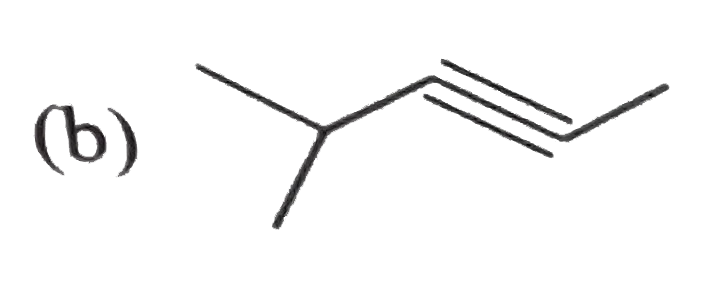Chlorobenzene gives a white precipitate with alcoholic silver nitrate solution. True or False?
To determine whether chlorobenzene gives a white precipitate with alcoholic silver nitrate solution, we can analyze the reaction step by step.
Step 1: Understanding the Reactants
Chlorobenzene (C6H5Cl) is an aromatic compound where a chlorine atom is attached to a benzene ring. Alcoholic silver nitrate (AgNO3 in alcohol) is often used to test for the presence of halides.
Hint: Identify the structure of chlorobenzene and the role of silver nitrate in the reaction.
Step 2: Reaction Mechanism
When chlorobenzene is treated with alcoholic silver nitrate, the expectation is that the chlorine atom would leave, forming a carbocation and allowing the silver ion (Ag+) to react with the chloride ion (Cl-) to form silver chloride (AgCl), which is a white precipitate.
Hint: Consider what happens when the chlorine atom is removed from the chlorobenzene molecule.
Step 3: Carbocation Stability
The formation of the carbocation is crucial for the reaction to proceed. In the case of chlorobenzene, the carbon atom bonded to the chlorine is sp2 hybridized, which means it is part of the aromatic system. The carbocation that would form upon the departure of Cl is not stable because it does not have resonance stabilization like other carbocations might have.
Hint: Analyze the stability of the carbocation that would form from chlorobenzene.
Step 4: Conclusion
Since the carbocation formed from chlorobenzene is unstable, the reaction does not proceed to form AgCl. Therefore, chlorobenzene does not give a white precipitate when treated with alcoholic silver nitrate.
Hint: Summarize the findings based on the stability of the carbocation and the expected reaction outcome.
Final Answer
False. Chlorobenzene does not give a white precipitate with alcoholic silver nitrate solution because the reaction does not proceed due to the instability of the carbocation formed.
Chlorobenzene (C6H5Cl) is an aromatic compound where a chlorine atom is attached to a benzene ring. Alcoholic silver nitrate (AgNO3 in alcohol) is often used to test for the presence of halides.
When chlorobenzene is treated with alcoholic silver nitrate, the expectation is that the chlorine atom would leave, forming a carbocation and allowing the silver ion (Ag+) to react with the chloride ion (Cl-) to form silver chloride (AgCl), which is a white precipitate.
The formation of the carbocation is crucial for the reaction to proceed. In the case of chlorobenzene, the carbon atom bonded to the chlorine is sp2 hybridized, which means it is part of the aromatic system. The carbocation that would form upon the departure of Cl is not stable because it does not have resonance stabilization like other carbocations might have.
Since the carbocation formed from chlorobenzene is unstable, the reaction does not proceed to form AgCl. Therefore, chlorobenzene does not give a white precipitate when treated with alcoholic silver nitrate.
False. Chlorobenzene does not give a white precipitate with alcoholic silver nitrate solution because the reaction does not proceed due to the instability of the carbocation formed.
Topper's Solved these Questions
- BOOK - MODERN PUBLICATIONCHAPTER - HALOALKANES AND HALOARENESEXERCISE - MEMORY TEST (B. Complete the missing links)11videos
HALOALKANES AND HALOARENES
- BOOK - MODERN PUBLICATIONCHAPTER - HALOALKANES AND HALOARENESEXERCISE - MEMORY TEST (C. Choose the correct alternative)11videos
HALOALKANES AND HALOARENES
- BOOK - MODERN PUBLICATIONCHAPTER - HALOALKANES AND HALOARENESEXERCISE - NCERT examplar Problems (Assertion and Reason Type Questions)10videos
HALOALKANES AND HALOARENES
- BOOK - MODERN PUBLICATIONCHAPTER - EQUILIBRIUMEXERCISE - Unit Practice Test13videos
EQUILIBRIUM
- BOOK - MODERN PUBLICATIONCHAPTER - HYDROCARBONSEXERCISE - UNIT PRACTICE TEST15videos
HYDROCARBONS
Similar Questions
Knowledge Check
- Question 1 - Select One
H3PO4Δ−−→XΔ−−→Y gives a white precipitate with silver nitrate solution.
X is aAdi basic acidBtri basic acidCmono basic acidDtetra basic acid - Question 2 - Select One or More
Which of the following will not give white precipitate with ammoniacal silver nitrate solution ?
ACH3−C≡C−CH3B C
C D
D
- Question 3 - Select One or More
Which of the following will not give white precipitate with ammoniacal silver nitrate solution ?
ACH3−C≡C−CH3B C
C D
D
Silver nitrate solution when added to a colourless aqueous solution E forms a white precipitate which dissolves in excess of E. if the white precipitate is heated with water it turs black and the supernatant solution gives a white precipitate with acidified barium nitrate solution. Therefore, E is:
View SolutionWhich compound does not give precipitate with ammonical silver nitrate solution ?
View SolutionWhich one of the following will not give white precipitate with ammonical silver nitrate solution
View SolutionSilver nitrate solution when added to a colorless aqueous solution E forms a white precipitate which dissolves in excess of E. If the white precipitate is heated with water it turns black and the supernatant solution gives a white precipitate with acidified barrum nitrate solution. Therefore, E is :
View SolutionH3PO4Δ−−→XΔ−−→Y gives a white precipitate with silver nitrate solution.
Y can form polyanions. The one that represents the polyanion is:View Solution

